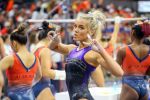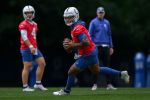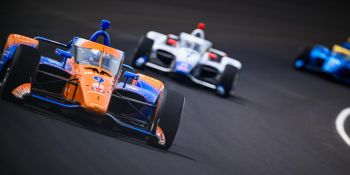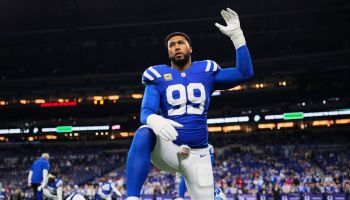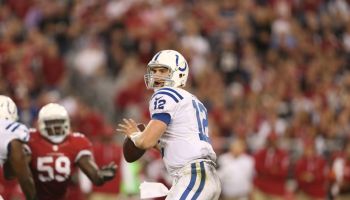SPEEDWAY, Ind. — With the fastest pole speed in the history of the Indianapolis 500, Scott Dixon will lead the field of 33 to the green flag for the second consecutive year on Memorial Day weekend.
Guess we were lucky with the weather and that had us in the Fast 12,” Dixon said. “Step One, but it doesn’t guarantee you anything.”
The rain stayed away for the first time in days and temperatures stayed relatively cool, creating some ideal conditions for fast speeds.
In a new format with two rounds of pole qualifying, Dixon set a blistering pace in his initial Fast 12 run of 233.513. In the Firestone Fast 6, he would go even faster with a four-lap average of 234.046.
“The pole run is such a team effort,” Dixon said. “It’s so cool to see all that work done in the last months pay off. It’s the fastest one I’ve ever done!”
Dixon outpaced Alex Palou and Rinus Veekay down the stretch of qualifying to secure the pole. This will be the first time Palou will start on the front row, and the second year in a row that Veekay will start third.
Dixon was also the fastest of all five Chip Ganassi Racing drivers who qualified for the Top 12 spots.
Though Dixon’s speed is the fastest pole speed in Indy 500 history, it is not the fastest qualifying speed overall. Dixon is now second to Arie Luyendyk’s run in 1996 of 236.986 mph.
Veekay, who is from the Netherlands like Luyendyk, is happy with his run to start on the front row.
“I wish I could have been a little faster than Scott so it could be 1-2 for the Dutchmen,” Veekay said. “Race day set up I think we are very strong. I’ve grown quite a lot of experience the last couple races, so I’m sure I can give him a run for his money.”
Luyendyk did not start on pole that year because his car failed tech inspection on Pole Day and he had to qualify again the following weekend and eventually start in the middle of Row 7.
Though technically it is the fastest qualifying average for the whole field in history at 231.023, that notion is up for some debate since Stefan Wilson did not attempt a qualifying run at all over the weekend because of engine issues. As of right now, his “no time” designation is not included in the field qualifying average, which means the field average is for 32 cars and not the full 33.
With qualifying over, drivers will now refocus again on tuning their race day setup. Drivers will have another practice session on Monday, May 23rd. They will then have three days off before taking part in one final two-hour session on Carb Day, the Friday before race day on Sunday.
Here is how the field will take the green flag:
Row 1: 9-Scott Dixon (234.046), 10-Alex Palou (233.499), 21-Rinus Veekay (233.385)
Row 2: 33-Ed Carpenter (233.080), 8-Marcus Ericsson (232.764), 1-Tony Kanaan (232.372)
Row 3: 5-Pato O’Ward (232.702), 7-Felix Rosenqvist (232.182), 28-Romain Grosjean (231.999)
Row 4: 51-Takuma Sato (231.670), 12-Will Power (231.534), 48-Jimmie Johnson (231.264)
Row 5: 18-David Malukas (231.607), 2-Josef Newgarden (231.580), 23-Santino Ferrucci (231.508)
Row 6: 60-Simon Pagenaud (231.275), 11-JR Hildebrand (231.112), 20-Conor Daly (230.999)
Row 7: 77-Callum Ilott (230.961), 27-Alexander Rossi (230.812), 15-Graham Rahal (230.766)
Row 8: 24-Sage Karam (230.464), 98-Marco Andretti (230.345), 29-Devlin DeFrancesco (230.326)
Row 9: 26-Colton Herta (230.235), 3-Scott McLaughlin (230.154), 06-Helio Castroneves (229.630)
Row 10: 14-Kyle Kirkwood (229.406), 4-Dalton Kellett (228.916), 6-Juan Pablo Montoya (228.622)
Row 11: 30-Christian Lungaard (227.053), 45-Jack Harvey (226.851), 25-Stefan Wilson (No Time)
